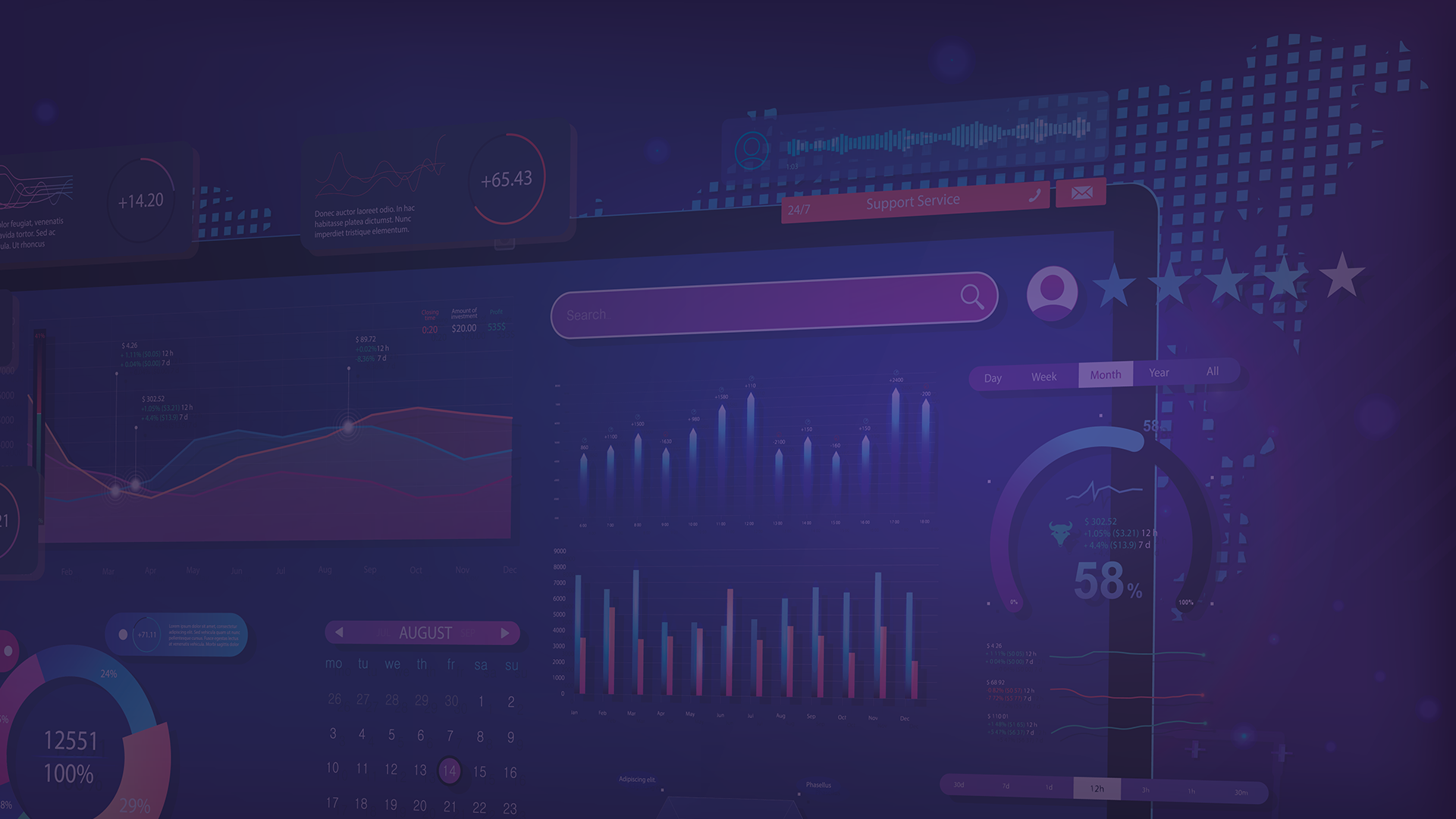So you’re a small business and are wondering what KPIs you need to be tracking. Well, you are definitely in the right place.
The bottom line for every organisation is the overall health of the business. Whether you have 5 employees or 5,000, 2 customers or 20,000, the importance of and the reasons for KPI tracking are the same. They show your progress toward a specific goal or target, help guide decision-making, and keep employees on track and motivated. In a small business especially, there is less room for error, so making informed, data-based decisions is crucial to success. We have put together a list of KPIs that will keep any small business on the right path.
Revenue
Revenue, sometimes known as sales, is the amount of money a business makes before paying out expenses like salaries or operating costs. There are a number of different ways you can measure revenue depending on your business model.
The benefits of tracking revenue are easy to see, the main one being that you can track how your business is doing in real time. It can also be a good indicator of how things like sales initiatives, marketing campaigns, etc. are performing. Is revenue increasing or decreasing in line with these activities?
Revenue growth rate
Whereas revenue states how much a business is making, revenue growth rate shows how much a business is growing. It’s essentially the rate at which your revenue is increasing (or decreasing) over a given period of time. Tracking revenue growth rate allows you to measure whether your business is growing or not, which in turn means you can take steps to course correct when needed.
To calculate your revenue growth rate, subtract your revenue from the previous year from your revenue from the current year, then divide that by your previous year’s revenue. Then multiply by 100 to get a percentage, and there you have your revenue growth rate for that year. You can also calculate it on a monthly, weekly or quarterly basis.

The growth rate of a company depends on numerous factors like the size, the industry and their overall available budgets. Generally speaking though, a business with a revenue growth rate of 10% or above is considered good. In some cases, however, 2% or 3% can still be healthy.
Gross profit margin/net profit margin
Profit margin in general shows the percentage of revenue that ends in profit. Essentially, it’s revenue after certain costs are subtracted. There are two main types of profit margin to be aware of and track.
Gross profit margin is revenue minus the cost of goods sold (COGS). COGS generally refers to the costs of actually creating the good or providing the service, not the operating costs of the business. This KPI is the baseline for your profitability - basically, how much money is left once you pay everyone. Like revenue, it’s a good indicator of how you’re doing as a business. A growing profit margin means that you are either growing revenue or becoming more efficient with costs (or both), both of which are important.

Net profit margin, on the other hand, shows your profits as a percentage of the total revenue of the business. It’s calculated by dividing net profit by total revenue. Net profit itself is revenue minus COGS and operating expenses.

Like gross profit margin, net profit margin is an important KPI for small businesses in determining how profitable your business actually is. It’s also essential to keep these two KPIs distinct as net margin shows the money you’re actually left with after deducting all business expenses and not just COGS. For small businesses, this is often the more important figure as it shows what money they actually have available.
Quick ratio (acid test)
Quick ratio measures the short-term financial viability of a small business (or any business). It measures whether the assets of your business are adequate enough to cover your current financial obligations. Quick ratio is calculated by taking a company’s current assets, not including any inventory, and dividing them by its current liabilities. You’re generally aiming for a ratio of 1.0 or more.

For example, a quick ratio of 1.2 indicates that a business has £1.2 of assets for every £1 of financial liability.
Working capital
This measures the difference between current assets (cash, accounts receivable etc) and liabilities (accounts payable, payroll, taxes etc). It basically highlights the current financial state of the business by considering the actual liquidity to cover immediate expenses. Basically, it is a reflection of a business's operational efficiency and budget management. If a business has more current liabilities than assets, it has a negative working capital, meaning they are spending more than what they earn, which is a risky strategy for any small business. Having a positive working capital (when current assets exceed current liabilities) is particularly important for small businesses as it’s unlikely they have many other options to fall back on to cover expenses.
Customer acquisition cost (CAC)
Customer acquisition measures how much it costs a business to acquire a single customer. This is a crucial KPI, especially for small businesses, as it essentially shows you how efficient your marketing and sales operations are. If your CAC is too high, it can signal you’re spending your money in the wrong areas or that your sales funnel needs improvement. Put simply, if your CAC is continuously higher than revenue, then you’ll quickly run out of money.

So what is a good CAC? There is no hard and fast number, but it will depend on your customer lifetime value (total revenue generated by a customer over the total duration of their subscription with you). As a general rule, a good CAC is less than 25% of your CLV.
For small businesses, it can be beneficial to calculate CAC for each of your channels. For example, if you’re running paid search ads, you would divide the total cost spent on those ads by the number of customers directly attributable to those ads. Measuring in this way shows you your most and least profitable channels, meaning you can put your money into campaigns that are actually generating customers.
Conversion rate
Generally, conversion rate is the percentage of leads or prospects that become paying customers. Conversions don’t necessarily always have to be making a purchase, it could be the rate of customers who complete an online form, download an ebook or sign up for a demo. The way to calculate conversion rate really depends on the type of business you run, as leads are defined differently for different industries.
If you run an ecommerce business, the conversion rate would be the number of people who visited your online store compared to those who actually made a purchase. Here, conversion rate would be calculated by dividing the number of visitors by the number of those visitors who made a purchase and then converting that into a percentage. For example, if you had 15,000 visitors and 500 of those made a purchase, then your conversion rate is 3%.
Conversion rate is important as it can show what is and isn't working for a myriad of different elements, like marketing and sales. This is especially crucial for small businesses that may not have the budget or resources to pour into unlimited campaigns.
Cash flow forecast
Understanding cash flow is absolutely crucial for small businesses as their margins are typically tighter than larger, more established companies. A cash flow forecast predicts the amount of money that will flow in and out of a business over a given period of time, including projected income and expenses. When creating a cashflow forecast you usually take into consideration three main elements: forecast sales, timings of projected payments, and projected costs.
There are a few reasons cash flow forecasts are important for small businesses. Firstly, they help ensure you can actually make any upcoming payments. Second, if you’re using them regularly, they can be an early warning system for any potential financial issues, allowing you to course-correct. Lastly, they are an essential document for any lenders or company investors, so if your small business is taking on any investment, you’ll have it at the ready.
Website traffic
Monitoring this will give you a wealth of different information, such as where your visitors are coming from, which channels are working most effectively, the most popular times to visit your site and the breakdown of visitors between mobile and desktop. In turn, this will allow you to make any necessary changes as your business grows. For example, if you see the majority of visitors are on mobile, you might want to consider creating a mobile app. Likewise, if you notice any big dips in website visitors, you could launch a sale or run special promotions during those quiet times to increase visits.
Customer churn
If you operate a subscription-based or an ecommerce business, then customer churn is definitely one to consider. Not every customer will stay with you forever, and for a small business, customer retention is vital. Building a loyal customer base is the key to repeat sales which means a steady source of revenue. Customer churn is the percentage of customers who have stopped using your product or service within a given time frame. To calculate, divide the number of customers lost during a specific time period by the total number of customers at the start of the period, then multiply by 100. Keeping a close eye on this figure allows you to know how many new customers or sales you need to generate to keep the company running successfully.
Conclusion
The bottom line is that tracking KPIs is crucial for any business, but particularly small businesses where employees may wear many different hats, regularly shifting focus between tasks and activities. Tracking your KPIs will keep you on track, seeing progress and performance towards your key objectives. This doesn’t have to be an overwhelming task when you have the right software. Hurree is the perfect tool for businesses of all sizes to display all the data they need, on a dashboard that allows you to make well-informed decisions to grow your business.
Share this
You May Also Like
These Related Stories

6 Benefits of KPI Reporting

7 KPIs Your SaaS Company Should be Tracking


